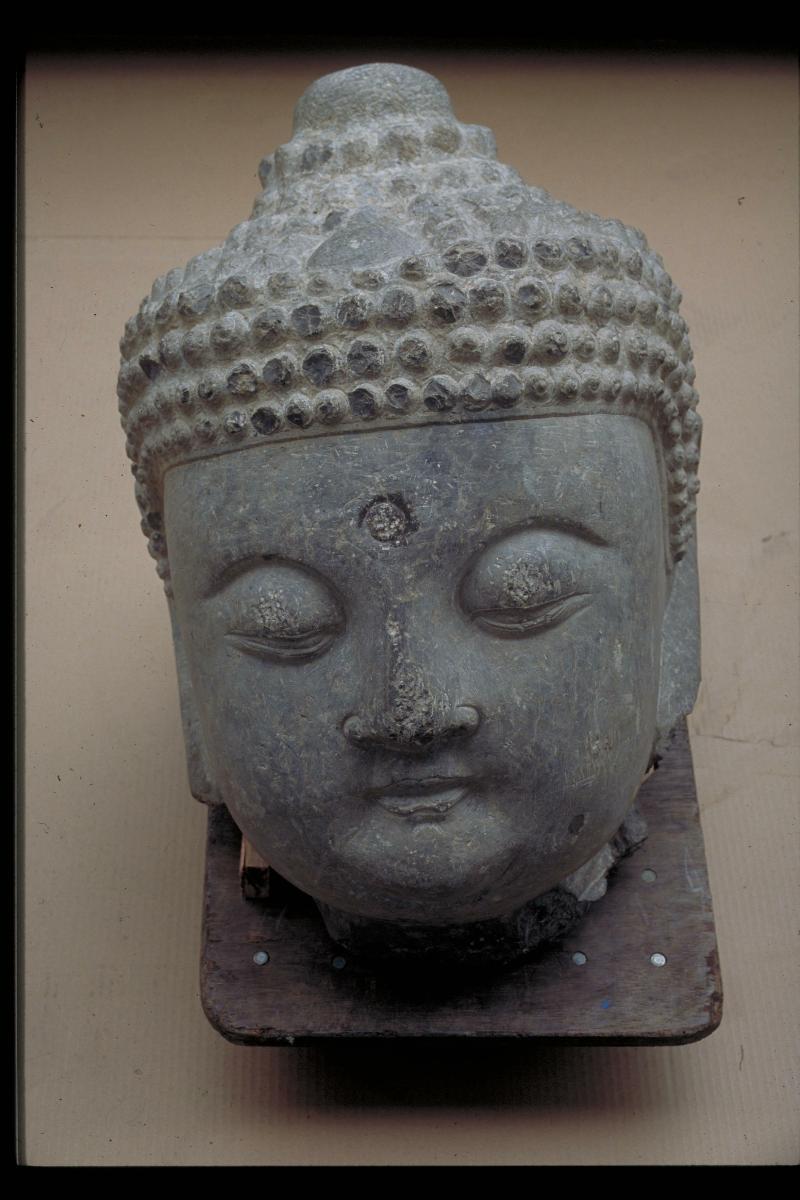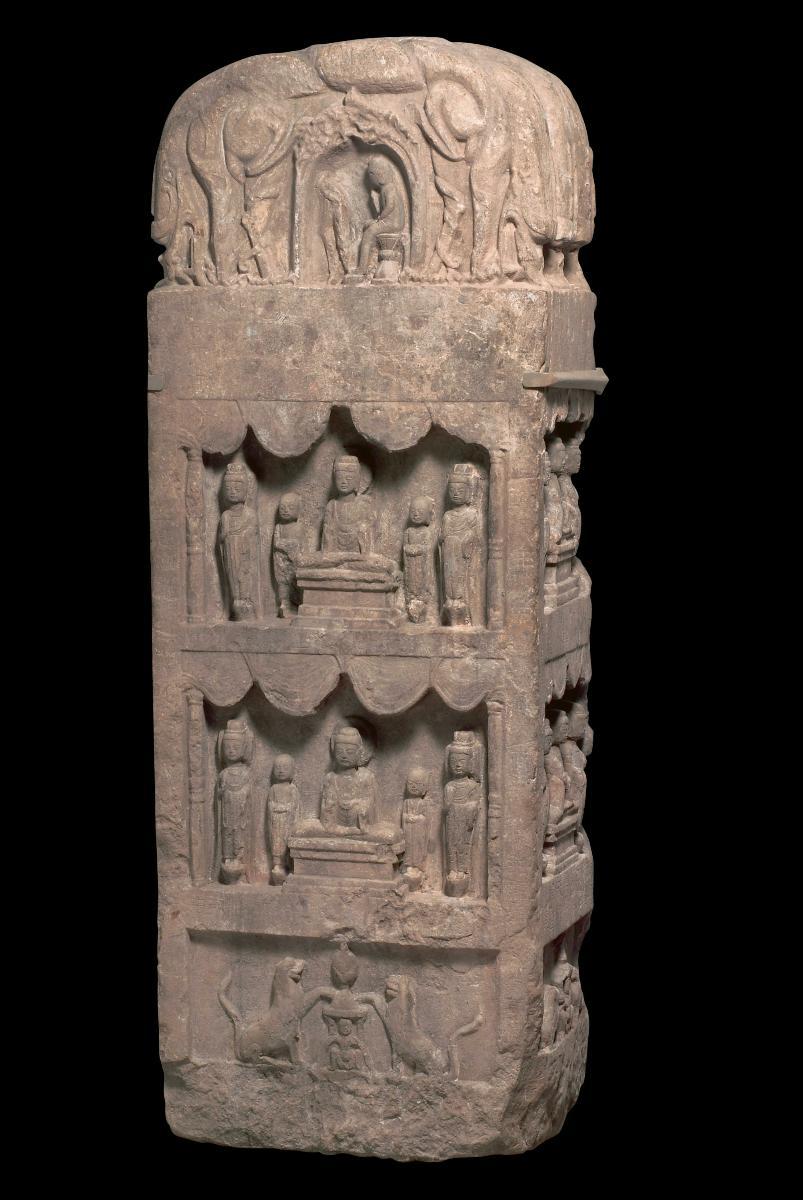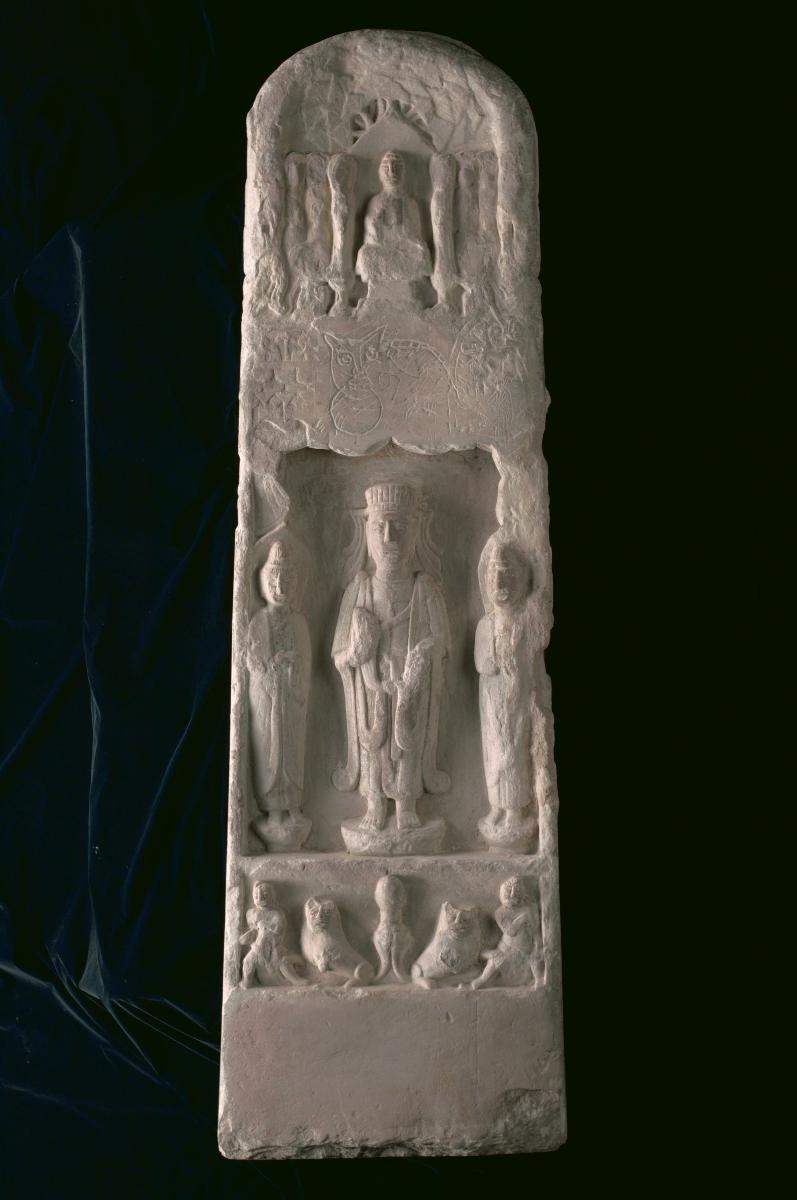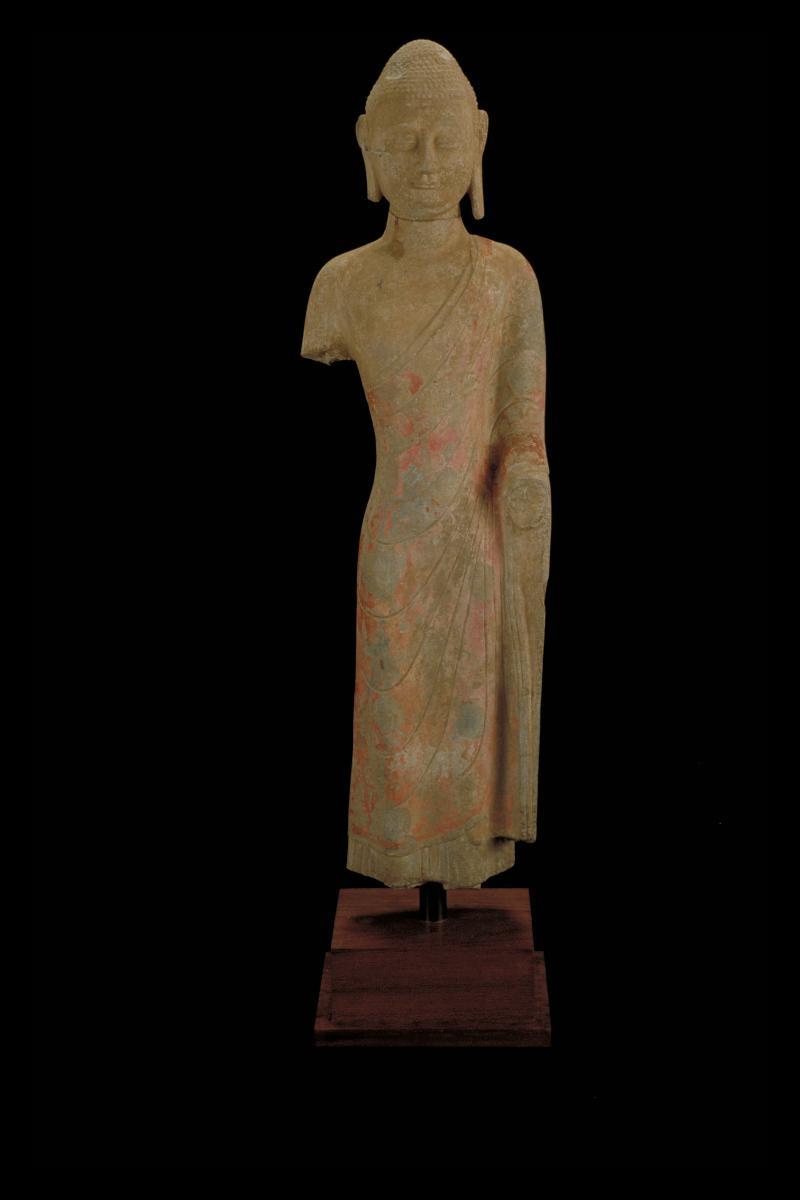Carved images of Buddha during the Ming period were more humanised and simplified. Features such as the face and hips were not as full as Tang images.From the time Buddhism was first introduced to China in the 1st century until the 10th century, India was China’s most important source of information and inspiration. It was a period of intensive learning, during which monks and sages of both lands plied the Silk Road of Central Asia, studying and preaching the way to salvation first attained by Buddha Shakyamuni. From their Indian tutors, the Chinese Buddhists acquired the know-how of creating rock-cut temples and monasteries, as well as of sculpting stone images. Both the Indian Gupta style and the Central Asian Gandharan style (that combines Hellenistic or Greco-Roman techniques with Indian Buddhist iconography) left significant marks on the history of Chinese stone sculpture, thus suggesting frequent interactions and exchange of ideas between the artists of both cultures. Not only were monks and teachers of Indian origins frequent visitors to China, their artists also participated in many Chinese public works devoted to Buddhism.















